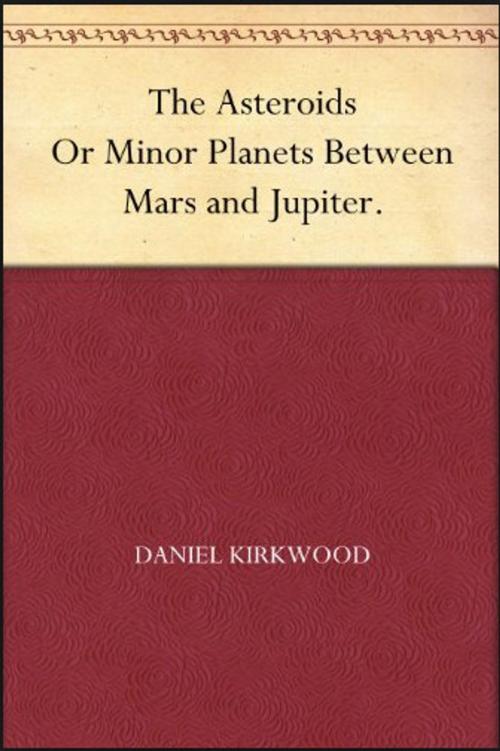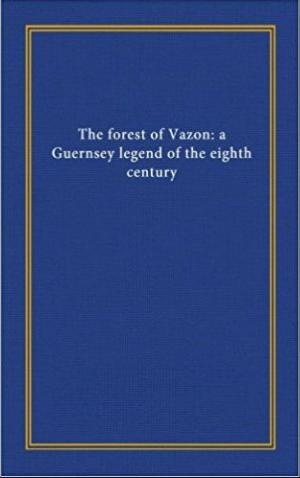THE ASTEROIDS, OR MINOR PLANETS BETWEEN MARS AND JUPITER.
Science Fiction & Fantasy, Steampunk, Space Opera| Author: | DANIEL KIRKWOOD | ISBN: | 1230002315911 |
| Publisher: | Jwarlal | Publication: | May 11, 2018 |
| Imprint: | Language: | English |
| Author: | DANIEL KIRKWOOD |
| ISBN: | 1230002315911 |
| Publisher: | Jwarlal |
| Publication: | May 11, 2018 |
| Imprint: | |
| Language: | English |
This book is among the best-selling popular classics "bestseller". Here is an extract of this book :
The first observer who watched the skies with any degree of care could not fail to notice that while the greater number of stars maintained the same relative places, a few from night to night were ever changing their positions. The planetary character of Mercury, Venus, Mars, Jupiter, and Saturn was thus known before the dawn of history. The names, however, of those who first distinguished them as "wanderers" are hopelessly lost. Venus, the morning and evening star, was long regarded as two distinct bodies. The discovery that the change of aspect was due to a single planet's change of position is ascribed to Pythagoras.
At the beginning of the seventeenth century but six primary planets and one satellite were known as members of the solar system. Very few, even of the learned, had then accepted the theory of Copernicus; in fact, before the invention of the telescope the evidence in its favor was not absolutely conclusive. On the 7th of January, 1610, Galileo first saw the satellites of Jupiter. The bearing of this discovery on the theory of the universe was sufficiently obvious. Such was the prejudice, however, against the Copernican system that some of its opponents denied even the reality of Galileo's discovery. "Those satellites," said a Tuscan astronomer, "are invisible to the naked eye, and therefore can exercise no influence on the earth, and therefore would be useless, and therefore do not exist. Besides, the Jews and other ancient nations, as well as modern Europeans, have adopted the division of the week into seven days, and have named them from the seven planets; now, if we increase the number of planets this whole system falls to the ground."
No other secondary planet was discovered till March 25, 1655, when Titan, the largest satellite of Saturn, was detected by Huyghens. About two years later (December 7, 1657) the same astronomer discovered the true form of Saturn's ring; and before the close of the century (1671-1684) four more satellites, Japetus, Rhea, Tethys, and Dione, were added to the Saturnian system by the elder Cassini. Our planetary system, therefore, as known at the close of the seventeenth century, consisted of six primary and ten secondary planets.
Nearly a century had elapsed from the date of Cassini's discovery of Dione, when, on the 13th of March, 1781, Sir William Herschel enlarged the dimensions of our system by the detection of a planet—Uranus—exterior to Saturn. A few years later (1787-1794) the same distinguished observer discovered the first and second satellites of Saturn, and also the four Uranian satellites. He was the only planet discoverer of the eighteenth century.
This book is among the best-selling popular classics "bestseller". Here is an extract of this book :
The first observer who watched the skies with any degree of care could not fail to notice that while the greater number of stars maintained the same relative places, a few from night to night were ever changing their positions. The planetary character of Mercury, Venus, Mars, Jupiter, and Saturn was thus known before the dawn of history. The names, however, of those who first distinguished them as "wanderers" are hopelessly lost. Venus, the morning and evening star, was long regarded as two distinct bodies. The discovery that the change of aspect was due to a single planet's change of position is ascribed to Pythagoras.
At the beginning of the seventeenth century but six primary planets and one satellite were known as members of the solar system. Very few, even of the learned, had then accepted the theory of Copernicus; in fact, before the invention of the telescope the evidence in its favor was not absolutely conclusive. On the 7th of January, 1610, Galileo first saw the satellites of Jupiter. The bearing of this discovery on the theory of the universe was sufficiently obvious. Such was the prejudice, however, against the Copernican system that some of its opponents denied even the reality of Galileo's discovery. "Those satellites," said a Tuscan astronomer, "are invisible to the naked eye, and therefore can exercise no influence on the earth, and therefore would be useless, and therefore do not exist. Besides, the Jews and other ancient nations, as well as modern Europeans, have adopted the division of the week into seven days, and have named them from the seven planets; now, if we increase the number of planets this whole system falls to the ground."
No other secondary planet was discovered till March 25, 1655, when Titan, the largest satellite of Saturn, was detected by Huyghens. About two years later (December 7, 1657) the same astronomer discovered the true form of Saturn's ring; and before the close of the century (1671-1684) four more satellites, Japetus, Rhea, Tethys, and Dione, were added to the Saturnian system by the elder Cassini. Our planetary system, therefore, as known at the close of the seventeenth century, consisted of six primary and ten secondary planets.
Nearly a century had elapsed from the date of Cassini's discovery of Dione, when, on the 13th of March, 1781, Sir William Herschel enlarged the dimensions of our system by the detection of a planet—Uranus—exterior to Saturn. A few years later (1787-1794) the same distinguished observer discovered the first and second satellites of Saturn, and also the four Uranian satellites. He was the only planet discoverer of the eighteenth century.















